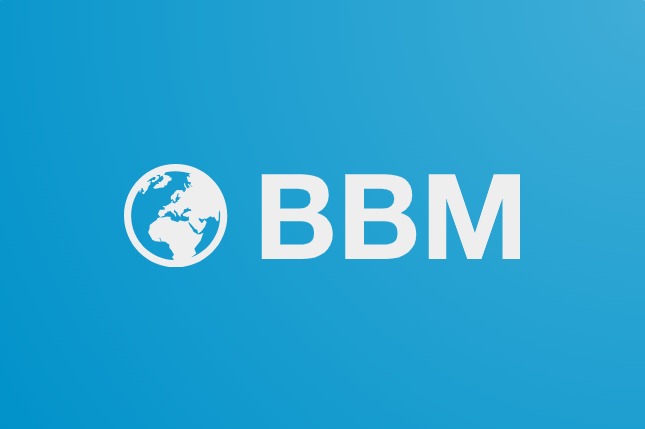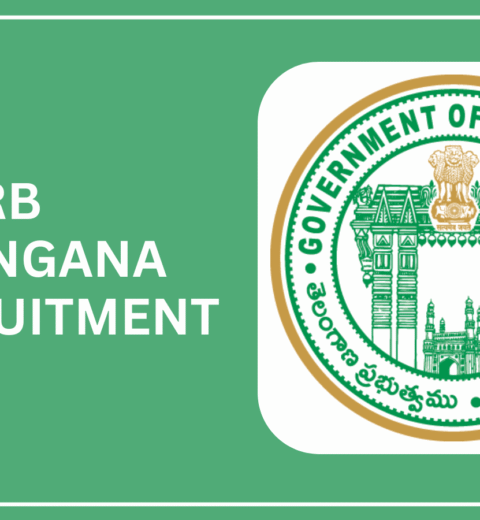Table of Content
- What is an Experience Certificate?
- How Does an Experience Certificate Work?
- Advantages of an Experience Certificate
- Key Features of an Experience Certificate
- How to Write a Work Experience Certificate: A Step-by-Step Guide
- How to Create an Experience Certificate
- Examples of Experience Certificate
- Conclusion
An experience certificate is an official document that validates an individual’s employment history, including their tenure, job title, and key responsibilities. Serving as critical proof of professional experience, this certificate enhances credibility for job seekers, students applying for higher education, or professionals navigating immigration and career transitions.
Typically issued upon an employee’s resignation or completion of service, a well-structured experience certificate not only confirms past employment but also highlights skills and contributions, making it an indispensable asset for future opportunities.
What is an Experience Certificate?
A work experience certificate is an official document issued by an employer upon the conclusion of an employee’s service. It typically includes the employee’s job title, employment duration, key responsibilities, notable achievements, and final compensation details. Additionally, the certificate often highlights the employee’s work ethic, skills, and professional conduct, providing a comprehensive evaluation of their performance.
These certificates are usually printed on company letterhead and signed by an authorised representative, serving as formal proof of employment. To ensure maximum utility for verification purposes, whether for future employers, HR departments, or other authorities, the document should follow a standardised experience certificate format in Word template for clarity and professionalism.
How Does an Experience Certificate Work?
A person’s experience certificate is useful in many ways as they move up in their career. Here are the most important ways it works:
- Proof of Employment: It serves as proof that a person has worked for a certain company for a duration. Recruiters or visa officers can check this information against other sources to ensure the individual genuinely held the position.
- Verification of Role and Responsibilities: The certificate spells out the worker’s role and duties, which can help potential employers understand their skills and areas of knowledge.
- Support for Career Advancement: A valid experience certificate is often a mandatory requirement for job applications, particularly in reputed organisations, multinational companies, and government sectors. It significantly enhances a resume.
- Enhancement of Professional Credibility: It strengthens the candidate’s credibility and validates their professional claims during recruitment and background checks.
Advantages of an Experience Certificate
A work experience certificate isn’t just a formality; it has many useful benefits that can help a person advance in their job. Here are some of the main benefits:
1) Career Progression
An experience certificate is a verifiable document that demonstrates the candidate’s previous roles, responsibilities, and accomplishments, which are important aspects that employers evaluate when considering candidates for new opportunities or senior positions. It serves to substantiate eligibility for advanced job positions, salary negotiations, and promotions.
2) Immigration and Overseas Job Opportunities
An experience certificate is essential for international career opportunities because many foreign job markets and visa applications require documented proof of work history.
3) Academic and Research Applications
Higher education, like management, engineering, social sciences, healthcare, or research-based disciplines, needs an employee experience certificate format to see how much practical experience a student has in a certain area, especially for management or research-based programs.
4) Credibility During Background Checks
Employers frequently conduct thorough background checks. Original experience certificates are considered authentic evidence of an applicant’s professional contributions and employment history.
5) Helps with Internal Promotions
The experience certificate is a valuable supporting document, as internal promotions or role transitions may necessitate documented evidence of past performance, even within the same organisation.
Key Features of an Experience Certificate
For validation purposes and usefulness, a work experience certificate format must have a proper structure and format, including all the necessary information. The most important features are:
- Issue Date and Place: The certificate must display the date of issuance and the organisation’s name and address at the top.
- Salutation and Declaration: A formal greeting-commonly “To Whom It May Concern,”-is followed by a brief statement outlining the purpose of the certificate..
- Employee Details: This section should include the employee’s complete name, job title/designation, department or area of work, and, if applicable, employee ID.
- Duration of Employment: The start and end dates of employment should be explicitly stated to establish the employee’s exact tenure.
- Role and Responsibilities: A concise summary of the key responsibilities, tasks, and functions handled by the employee during their tenure.
- Performance Acknowledgement: A brief note highlighting the employee’s conduct, contributions, and overall performance during their service.
- Wishing Statement: A courteous closing message wishing the employee success in their future professional endeavours.
- Authorised Signature and Seal: An HR manager, director, or department head should sign the certificate and put the business seal on it for it to be valid.
- Company Letterhead: For authenticity, the certificate should be printed on the organisation’s official letterhead.
How to Write a Work Experience Certificate: A Step-by-Step Guide
Work experience certificates are official documents that demonstrate the duration of an individual’s employment with a company, their job title, and their level of job performance. Here are the steps you should take to write a clear and professional certificate:
- Use the Company’s Letterhead: Always use formal letterhead when making the certificate. If the company seal and contact information are not available, ensure the paper includes them.
- Start with a Salutation: In cases where the recipient is unknown, a courteous salutation such as ‘To Whom It May Concern’ should be used.
- Mention the Employee’s Full Name: Write the employee’s full legal name as it appears in company records, without any abbreviations or short forms.
- Include Parent’s Name (Optional): Include the parent’s full name, like “S/o Ramesh Kumar Sharma.”
- State the Designation and Company Name: Make sure to include the employee’s name and job title. If it applies, list any raises or changes in roles.
- Include Dates of Employment: Dates of starting and leaving, or use “present” if still working.
- Write a Polite Closing Statement: Conclude the certificate with a courteous statement wishing the employee success in their future endeavours.
- Add Signature and Seal: Include the HR person’s name, title, signature, and the business seal.
- Mention Date and Place: Include the date of issue and the company’s address.
How to Create an Experience Certificate
Here’s a simple and professional experience certificate template:
On Company Letterhead
Date: [Insert Date]
Place: [Insert Place]
To Whom It May Concern,
This is to certify that [Employee’s Full Name], S/o/D/o [Parent’s Name], was employed with [Company’s Name] as a [Job Title] from [Start Date] to [End Date].
During their tenure with us, [Employee’s Name] was responsible for [List of Duties and Responsibilities]. They displayed excellent dedication, professionalism, and the ability to handle responsibilities effectively.
We found them to be reliable team members and an asset to our organisation. We wish them success in their future career.
Sincerely,
[Signature]
[Printed Name]
[Designation]
[Company Name & Seal]
Examples of Experience Certificate
To better understand how an experience certificate is typically drafted across various roles, here are five samples of experience certificates for different job profiles. These examples follow the standard format and demonstrate how to effectively structure the certificate for each position.
Experience Certificate Sample – Teacher
On School Letterhead
Date: 14 March 2025
Place: Hyderabad
To Whom It May Concern,
This is to certify that Ms. Ananya Das, D/o Mr. Ramesh Das, was employed as a Science Teacher at Greenfield International School from 10 June 2019 to 28 February 2024.
During her tenure, Ms. Ananya was responsible for teaching biology and general science to students from grades 8 to 10. She demonstrated a strong command of subject matter, developed engaging lesson plans, and actively participated in school activities and academic planning sessions.
She was a valuable member of our faculty and contributed significantly to student development. We wish her continued success in her teaching career.
Sincerely,
[Signature]
Ritika Sharma
Principal
Greenfield International School
[School Seal]
Experience Certificate Sample – Marketing Executive
On Company Letterhead
Date: 22 March 2025
Place: Pune
To Whom It May Concern,
This is to certify that Ms. Swati Kapoor, D/o Mr. Harish Kapoor, was employed with MarketEdge Solutions Pvt. Ltd. as a Marketing Executive from 15 April 2020 to 31 December 2023.
Her key responsibilities included planning marketing strategies, executing digital campaigns, managing client relations, and preparing performance reports. She displayed excellent communication skills and an innovative approach to meeting marketing goals.
Swati was a committed professional and a valuable member of our team. We wish her success in all her future endeavours.
Sincerely,
[Signature]
Rajeev Khanna
Marketing Manager
MarketEdge Solutions Pvt. Ltd.
[Company Seal]
Conclusion
A work experience certificate serves as far more than mere documentation; it represents an official record of an employee’s professional growth, accomplishments, and contributions to an organisation. For employers, this document provides crucial verification of a candidate’s qualifications and employment history.
To maintain its credibility and usefulness, the certificate must include all essential components while adhering to either a standardised format or a customised template. By employing a professional structure with clear, concise language, the document preserves its integrity as both an authentic verification tool and a meaningful testament to the employee’s career journey.
FAQs
What should be on a certificate of work experience?
A work experience certificate should include the employee’s full name, job title, duration of employment, a brief description of duties or performance, and the company’s name and contact details. It should also contain a formal statement confirming the employment and be signed and dated by an authorised representative.
Do I need to ask my former boss for a work experience certificate?
Yes. While some companies provide it automatically, many require a formal written request. It’s best to reach out directly to your former supervisor or the HR department to ask for it.
Can I use a digital proof of work experience?
Yes, digital certificates are valid if they include the company’s letterhead, an official signature, and a clear issue date.
How do I write a certificate of training for a worker?
Use formal language and provide accurate details such as the employee’s name, training title, duration, and completion date. Mention any achievements or skills gained, and express appreciation if appropriate. Make sure it’s printed on company letterhead and signed by an authorised person.




